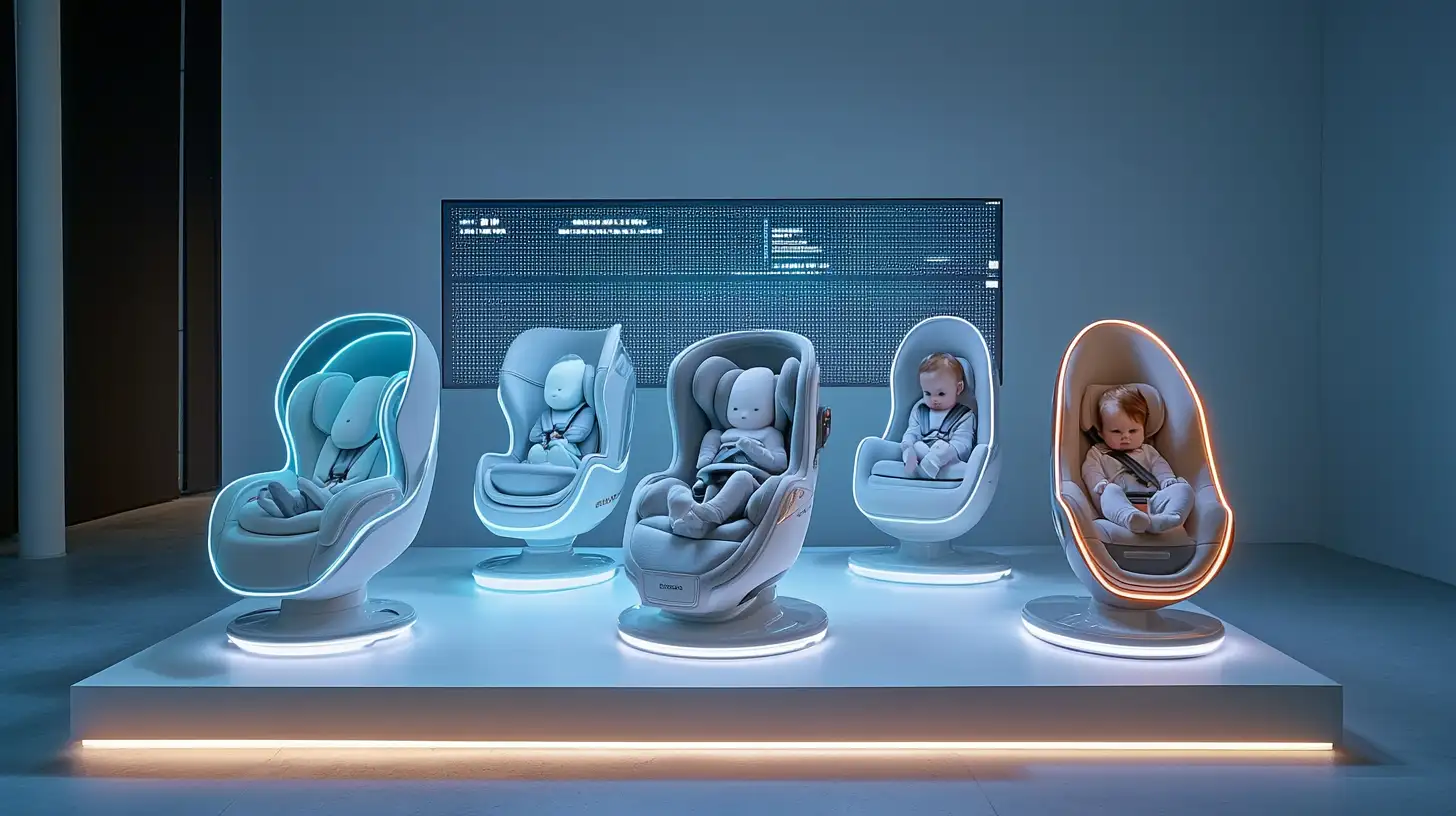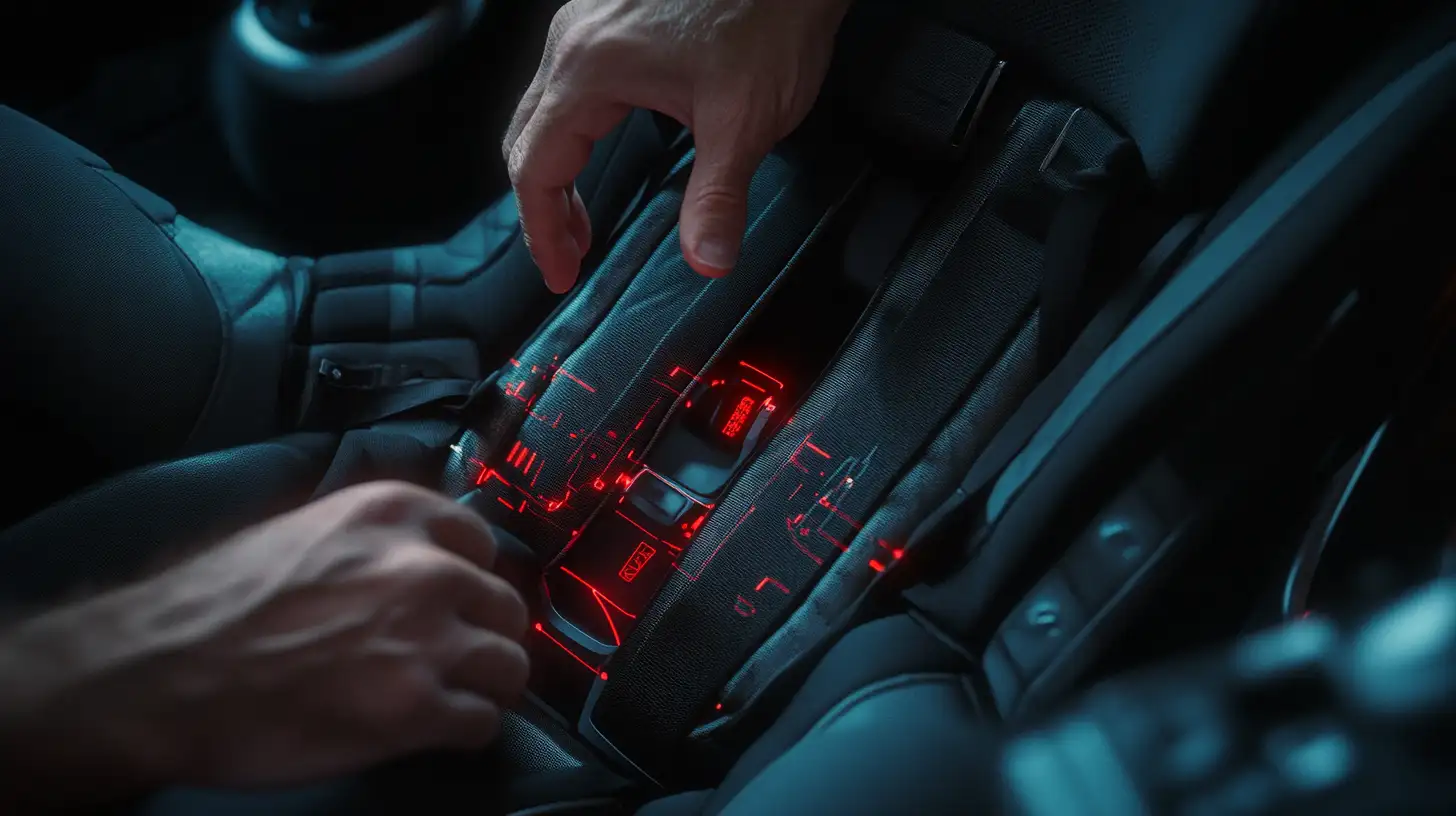Table of Contents
ToggleCar Seat Confidence: The Life-Saving Guide Every Parent Needs But Never Gets
Have you ever installed a car seat and wondered if you’ve done it right? That nagging feeling in the back of your mind as you drive away from the hospital with your precious new baby. Is it tight enough? Is the angle correct? Should it wiggle that much?
I still remember the first time I installed my daughter’s car seat. There I was, sweating in the parking lot, manual spread across the hood of the car, watching YouTube videos on my phone, and wondering how something so important could feel so complicated. And I’m not alone – studies show that nearly 80% of car seats are installed incorrectly in some way.
This may sound crazy, but the way to achieve car seat safety isn’t what you think. It’s not about buying the most expensive model or following your instincts. It’s about understanding the fundamentals and letting go of the myths we’ve all heard from well-meaning family members.
So let me explain how this works. I used to overthink everything about car seat safety. Every buckle, every strap, every position. And I thought if I just worried more, if I just spent more time fretting over every detail, my child would somehow be safer. But in reality, this anxiety was just clouding my judgment and making me second-guess even the things I was doing correctly.
What changed everything for me was gaining actual knowledge and confidence – and today, I’m going to share that with you. Give me these next few minutes, and I promise you’ll walk away feeling empowered about your child’s safety on the road.

The Foundation: Understanding Car Seat Types and When to Use Them
Here’s the biggest mistake most parents make. We think by purchasing the most expensive car seat with all the bells and whistles, that will make our babies safer. We believe that if we just want to protect them badly enough, we’ll intuitively know how to use these complex safety devices.
But what I’m saying here is that you should start with understanding the basics. Car seats come in five main types, and knowing which one is right for your child at each stage is critical:
- Rear-facing infant seats (birth to 2+ years)
- Convertible seats (birth to 4+ years, can be rear or forward-facing)
- All-in-one seats (birth to booster age, the grow with me option)
- Forward-facing seats with harnesses (2+ to 7 years approximately)
- Booster seats (4+ to 12 years approximately, until seat belts fit properly)
The truth is, the safest car seat is the one that fits your child correctly, is appropriate for their age and size, and that you can install correctly every single time. My island grandmother would say, It’s not the pot that makes the food taste good, it’s knowing how to use the right seasonings. The same applies here – it’s not about the fancy features, it’s about proper use.
And here’s a fact that changed my perspective: keeping your child rear-facing isn’t just a suggestion – it’s up to five times safer in the event of a crash. My son stayed rear-facing until he was nearly three, despite comments from family about his poor cramped legs. But you know what? Children are naturally flexible, and his safety was worth more than those comments.
The transition timing between seats isn’t about hitting milestones like birthdays – it’s about maxing out the height or weight limits of your current seat. When you’re no longer holding on to arbitrary transition dates and instead focusing on your child’s specific measurements, you show up differently as a parent. You become calmer, more confident, and much more powerful in your decisions.

Installation Mastery: The Make-or-Break Factor for Safety
When I installed my first car seat, I made a crucial mistake. I thought tighter meant safer, so I put all my weight into it, yanking straps until my fingers were raw. But here’s what I learned – there’s a just right tightness that maximizes safety without compromising the seat’s ability to absorb crash forces.
The law of proper installation says when you put in your best effort and follow the manufacturer’s instructions exactly, safety works in your favor. This isn’t about being obsessive about perfection – it’s about being methodical and attentive to details.
So imagine how you’d feel to be free from anxiety, free from second-guessing, free from the fear of making a deadly mistake. Because here’s the thing – when you know how to check your work, you gain confidence.
These are the three tests that changed everything for me:
- The inch test: Grab the car seat at the belt path and pull side-to-side and front-to-back. It shouldn’t move more than one inch in any direction.
- The pinch test: After buckling your child, pinch the harness strap at their collarbone. If you can pinch any excess webbing, it’s too loose.
- The level check: For infant seats, the angle matters tremendously. Most seats have built-in angle indicators – trust them, not your eye.
Now let me be clear – this isn’t about being perfect. It’s about being informed. I’ve watched parents get so frustrated with installation that they take shortcuts. But the best parents I know, they care deeply about safety, but they’re not paralyzed by fear. They show up, they learn the techniques, and then they verify their work. Because they know if they’ve followed the instructions and checked their work, they’ve already won. And so have you.

The Five Common Mistakes That Could Cost Everything
I’m a perfectionist by nature. And if you are too, shout out to all the fellow perfectionists out there! What I learned about car seat safety is that perfectionism isn’t about trying to get every detail right – it’s about understanding which details actually matter for safety.
So when I stopped procrastinating on learning the real safety issues versus the aesthetic ones, everything changed. I stopped worrying about whether the seat cover pattern matched my car interior and started focusing on these five critical mistakes:
1. Using the wrong seat for your child’s age and size. This isn’t just a minor issue – it fundamentally changes how crash forces affect your child’s body. I met a mom who had moved her 15-month-old to a forward-facing seat because she seemed too cramped. That decision increased her crash injury risk dramatically.
2. Harness straps that are too loose or positioned incorrectly. In a crash, loose straps mean your child’s body continues moving when the car stops. The difference between proper and loose restraint can be life and death. When my son was a newborn, I was scared to tighten his harness because he seemed so fragile – until a certified technician showed me that loose straps were actually more dangerous.
3. Chest clip positioned too low. This small piece of plastic has one critical job – keeping the harness straps properly positioned on the shoulders. Too low, and it can cause abdominal injuries; too high, and it can cause neck injuries. The sweet spot? Armpit level, every time.
4. Using both the lower anchors (LATCH) and seat belt together. Many parents think more is better when it comes to securing the seat. But car seats are designed to use either LATCH or the seat belt – never both together. Using both can actually compromise the seat’s ability to manage crash energy properly.
5. Adding non-approved accessories. Those cute head supports, strap covers, and bundle-me inserts from boutique baby stores? Unless they came with your seat or are explicitly approved by the manufacturer, they haven’t been crash-tested with your seat and could interfere with harness function.
Here is the most powerful thing I’ve learned: when you embrace your progress as a parent who’s learning versus trying to achieve perfection, you will protect your child better than you ever thought possible. Knowing that what you’re learning is enough, and that your attention to these details is enough. By taking that next step toward proper car seat use without knowing everything, but really just trusting in the process. That is the secret to your child’s safety.

The Positioning Puzzle: Where and How to Place the Car Seat
This fear of judgment from other parents about where you put your car seat? It’s really just stories you’re telling yourself. Because at the end of the day, safety facts won’t mind your feelings, and feelings shouldn’t override safety facts.
So let’s talk about car seat positioning – a topic that combines both science and practicality in ways that can feel overwhelming.
The middle rear seat is statistically the safest position in the vehicle – farthest from potential impact points. But here’s what changed my approach: the safest position is actually where you can get the most secure installation. For many vehicles, especially those with contoured seats, that might be one of the outboard positions.
My brother-in-law insisted the middle was the only acceptable position until he tried for hours to get a secure fit there. When he finally moved to the passenger-side rear seat, he got a rock-solid installation in minutes. The best installation location trumps the theoretical safest position every time.
Another positioning factor that rocked my world: the 80/20 rule of car seat use. 80% of a car seat’s safety comes from proper daily use – correct buckling, appropriate tightness, no bulky winter clothes under the harness. Only 20% comes from the actual crash performance differences between models. This means your consistent habits matter more than which premium model you chose.
When we’re no longer holding on to myths about positioning, we move differently as parents. We become more attentive to the things that actually improve safety:
- Checking that the seat doesn’t move more than one inch in any direction
- Ensuring the harness is snug with no slack
- Removing bulky coats before buckling (use them over the harness instead)
- Following the recline angle guidelines exactly
Why waste another moment obsessing about perfect positioning when these habits matter so much more? Why not build a safety routine you can actually maintain? The one that aligns with the reality of your vehicle, your child, and your daily needs.
Whenever you’re reading this, I want you to have the courage, clarity, and the power to make these safety decisions confidently. Because you become powerful when you stop worrying about the wrong things and focus on the safety factors that truly matter.

Beyond Installation: The Daily Habits That Save Lives
I used to think car seat safety was all about that initial installation. Get it right once, and you’re set. But in reality, it’s your daily habits that make the biggest difference.
Let me share something I wish I’d known sooner. The most dangerous time for car seat misuse isn’t when you first install it – it’s during the everyday rush of life. The quick trip to the store when you’re running late. The handoff to grandparents or daycare providers. The moment when your toddler is having a meltdown and you just want to get going.
These are the moments when shortcuts happen. When straps don’t get tightened properly. When the chest clip gets positioned wherever your squirming child will tolerate it. When you say just this once to something you know isn’t right.
But here’s the truth that changed everything for me: crashes don’t care about your reasons. They don’t happen only on long trips when you’ve been extra careful. They happen on quick errands. They happen five minutes from home. And in those moments, only your consistent habits protect your child.
So I developed what I call my non-negotiable checklist – the things I do every single time, no matter what:
- Harness snug enough to pass the pinch test
- Chest clip at armpit level
- No bulky clothing under the harness
- Nothing in the car that could become a projectile
- Car seat expiration date checked (yes, they expire!)
This checklist has saved me countless times from the just this once mentality. Like the day we were late for my son’s doctor appointment, pouring rain, and he was screaming. Every instinct said just go – but those five quick checks took less than 30 seconds and ensured his safety wasn’t compromised by our rush.
And the greatest irony here? When these safety habits become automatic, that’s when peace of mind finally falls into place. You’re no longer anxious about whether you’re doing it right – you just are.
The best parents I know aren’t perfect – they’re consistent. They show up, they follow their safety checklist, and then they focus on enjoying the journey with their child. Because they know if they’ve built these habits, they’ve already won the safety game. And so have you.
Your Road Forward: Confidence in Every Journey
When I first became a parent, I thought confidence would come naturally with time. But what I discovered is that real confidence comes from knowledge, practice, and trust in your ability to learn what matters.
So here’s my promise to you. If you’ve read this far, you already care more about car seat safety than most parents. You’re already ahead. And with each proper installation, each correct harness adjustment, each informed transition decision, your confidence will grow.
Remember that perfect is the enemy of good enough when it comes to parenting. Car seats are engineered with safety margins. Following the key guidelines gets you well within those margins. The mental energy you save by not obsessing over perfection can be redirected to the joy of parenting.
My island grandmother had another saying: The ship is safest in harbor, but that’s not what ships are built for. Your family wasn’t meant to stay home out of fear. You were meant to explore, to create memories, to live fully – just safely.
So take that road trip. Visit those relatives. Create those memories. Just do it with your non-negotiable safety habits firmly in place.
The next time someone questions your car seat choices – whether it’s about keeping your child rear-facing longer, being firm about proper buckling with grandparents, or any other safety decision – remember this: you are the expert on your child’s safety. You’ve done the research. You’ve practiced the skills. You’ve committed to the habits that matter.
Whenever you find yourself questioning whether you’re doing enough, come back to these fundamentals. Install correctly. Position appropriately. Buckle consistently. Transition thoughtfully. These four pillars of car seat safety will carry you through every journey, both the literal ones on the road and the figurative journey of parenting.
You’ve given your full attention to understanding what truly matters for your child’s safety. You’ve committed to the habits that make a difference. You have already won the most important battle – the one against complacency.
Thank you for being the kind of parent who cares this much. Your child may never know how much thought you put into these details, but every safe journey is your silent gift to them.
Step into Sue Brown's World of Baby Care, where you'll find a treasure trove of knowledge and wisdom waiting to be explored. Sue's dedication to providing accurate and up-to-date information on baby care shines through in every article, blog post, and resource she shares. From newborn essentials to sleep training tips, breastfeeding advice to nurturing your baby's development, Sue covers a wide range of topics that are essential for every parent to know. Her warm and compassionate approach creates a sense of community and reassurance, making her website a safe haven for parents seeking guidance and support. Let Sue Brown be your partner in this beautiful journey of parenthood, as she empowers you to create a loving, nurturing, and thriving environment for your little one.



